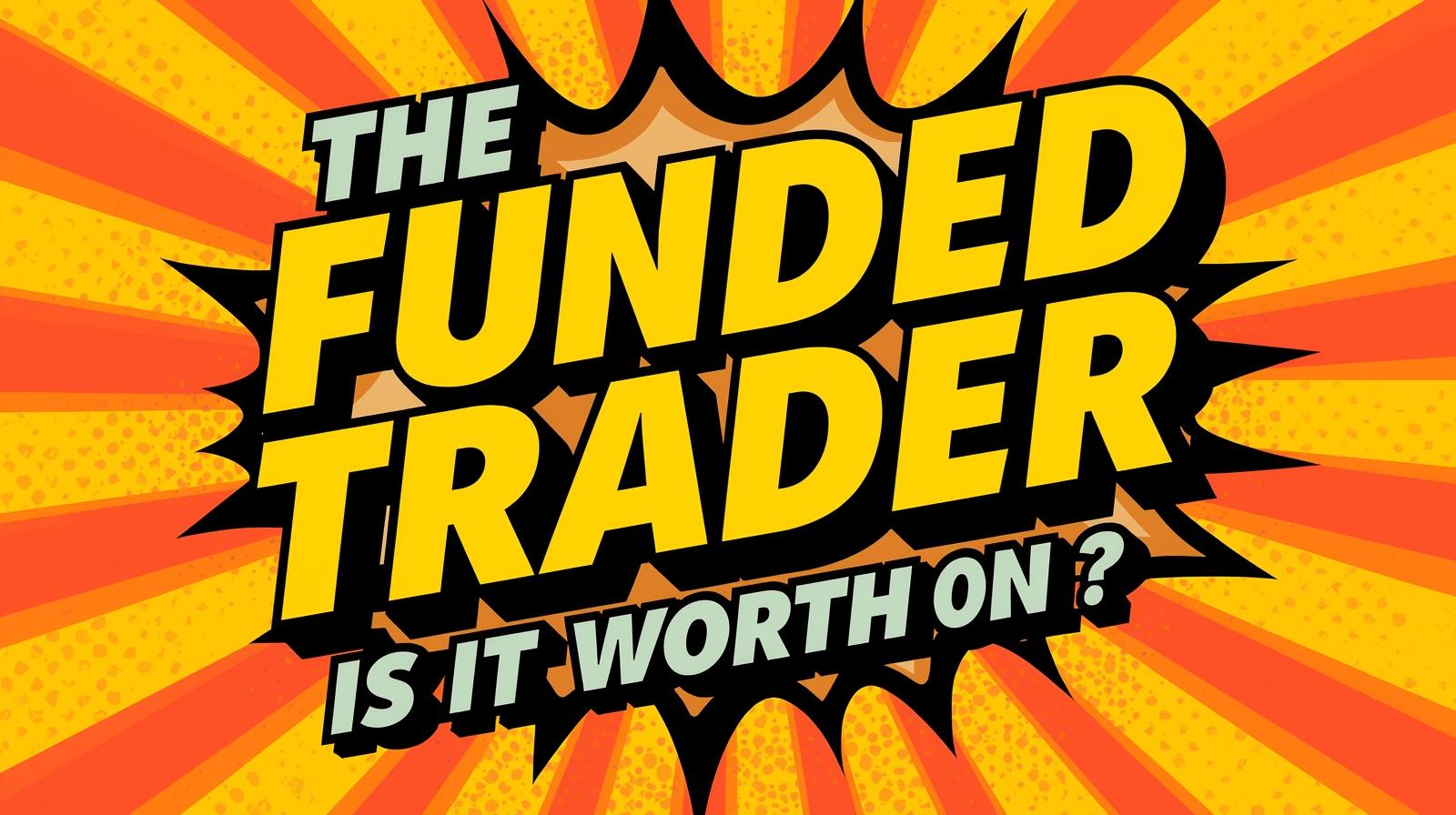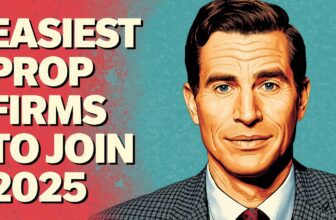
The Funded Trader (TFT) has emerged as one of the prominent players in this space, offering traders the opportunity to access significant capital without risking their own money. But the question remains: is The Funded Trader worth your time and investment in 2025? This comprehensive review aims to answer that question by examining every aspect of what TFT offers, how it compares to competitors, and whether it delivers on its promises.
What is The Funded Trader?
The Funded Trader is a proprietary trading firm that provides traders with access to trading capital after they prove their skills through evaluation challenges. Think of it as a sports team scouting for talented players – they’re looking for consistent, disciplined traders who can generate profits using their capital.
In 2025, The Funded Trader has evolved significantly from its earlier iterations, offering multiple account types, enhanced trading conditions, and a more streamlined evaluation process. The core concept remains unchanged: pass their trading challenges, and you gain access to funded accounts where you keep a significant portion of the profits you generate.
How Does The Funded Trader Work in 2025?
The process of getting funded through TFT follows these basic steps:
- Purchase an evaluation account (various sizes available from $10,000 to $400,000)
- Complete the evaluation phase by meeting specific profit targets while adhering to risk management rules
- Receive a funded account with the same balance
- Trade the funded account and earn between 70-90% of the profits (profit split percentages updated for 2025)
The 2025 version of TFT has streamlined this process considerably, reducing unnecessary constraints that previously hindered traders while maintaining strict risk management protocols that protect their capital.
The Funded Trader’s Evaluation Models in 2025
One of the most significant updates in The Funded Trader’s 2025 offering is its refined evaluation models. Understanding these is crucial when asking “is The Funded Trader worth it?” as they directly impact your path to funding.
Standard Model
The Standard Model remains TFT’s flagship offering with two phases:
- Phase 1: Achieve a 10% profit target with maximum daily drawdown of 5% and maximum overall drawdown of 10%
- Phase 2: Achieve an 5% profit target with the same drawdown limits
- Minimum trading days: 5 days per phase
- Time limit: 30 days per phase (extended from previous years)
Rapid Model
For more aggressive traders, the Rapid Model offers a faster path to funding:
- Single phase evaluation
- 12% profit target
- Maximum daily drawdown of 5%
- Maximum overall drawdown of 10%
- Minimum trading days: 3
- Time limit: 21 days
Evaluation Pricing (2025 Rates)
The cost of evaluations varies based on account size and model:
- $10,000 account: $85 (Standard) / $105 (Rapid)
- $25,000 account: $155 (Standard) / $195 (Rapid)
- $50,000 account: $250 (Standard) / $315 (Rapid)
- $100,000 account: $400 (Standard) / $500 (Rapid)
- $200,000 account: $675 (Standard) / $840 (Rapid)
- $400,000 account: $1,100 (Standard) / $1,350 (Rapid)
The Funded Trader Review 2025: Is It Worth It?
The Funded Trader Review 2025: Is It Worth It?
These 2025 prices reflect TFT’s market adjustment and competitive positioning. When considering “is The Funded Trader worth it?”, these costs must be weighed against the potential returns from successful funded trading.
Why Consider The Funded Trader in 2025?
Strengths and Benefits
The Funded Trader has several standout features in 2025 that make it worthy of consideration:
- Enhanced Scaling Plan: Traders can now increase their account size by up to 25% after each successful month (up from previous scaling options)
- Improved Profit Splits: Starting at 70% for new funded traders and increasing to 90% for consistent performers
- Diversified Instruments: Access to forex, commodities, indices, and cryptocurrencies on the same account
- Refined Trading Platform Options: Compatibility with MT4, MT5, and now additional platforms introduced in 2025
- Bi-Weekly Payouts: More frequent payment options for successful traders (improved from monthly in previous years)
The real-world application becomes clear when we look at it through this lens: imagine having access to $100,000 of trading capital after investing just $400. If you can generate a modest 5% return monthly while adhering to risk parameters, that’s a potential $3,500-$4,500 in your pocket each month (based on the profit split).
Limitations and Considerations
When evaluating “is The Funded Trader worth it?”, it’s important to consider these potential drawbacks:
- Evaluation Costs: The initial investment is non-refundable if you fail the challenge
- Strict Rules: While somewhat relaxed in 2025, drawdown limitations remain challenging for some trading styles
- Reset Fees: Failed evaluations require purchasing a new challenge
- Trading Style Restrictions: Certain aggressive strategies remain prohibited
How Does The Funded Trader Compare to Competitors in 2025?
The prop firm landscape has evolved significantly by 2025, with several major players competing for traders’ attention. Here’s how TFT stacks up against its main competitors:
TFT vs. FTMO
- Evaluation Costs: TFT offers slightly more competitive pricing across most account sizes
- Profit Targets: TFT’s 10%/5% two-phase model is comparable to FTMO’s structure
- Profit Splits: TFT’s scaling profit split (70-90%) now exceeds FTMO’s standard 70% split
- Platform Options: Both offer similar platform flexibility
TFT vs. TopstepTrader
- Focus: TFT offers more diverse instrument options compared to TopstepTrader’s futures focus
- Subscription Model: TFT maintains a one-time fee structure while TopstepTrader uses a subscription model
- Scaling: TFT’s account growth opportunities are more clearly defined
Tips for Success with The Funded Trader in 2025
If you’re considering “is The Funded Trader worth it?” and decide to proceed, these strategies will maximize your chances of success:
Preparation Strategies
- Practice with Demo Accounts: Test your strategy thoroughly before investing in an evaluation
- Start with Smaller Accounts: Build confidence and refine your approach with less pressure
- Study the Rules Thoroughly: Many failures stem from rule violations rather than trading performance
- Develop a Clear Trading Plan: Define entry, exit, and risk management parameters explicitly
Evaluation Phase Tactics
- Focus on Consistency: Aim for steady, smaller gains rather than hitting profit targets quickly
- Trade Reduced Size: Consider trading at 50% of your normal position size to manage drawdown risk
- Track Daily Metrics: Monitor your daily drawdown carefully to avoid violations
- Utilize the Minimum Trading Days Efficiently: Plan your trading schedule to meet requirements without forcing trades
What Real Traders Say: The Funded Trader Reviews in 2025
The consensus among traders in 2025 reflects a generally positive view of The Funded Trader, with some common themes emerging:
- Many traders appreciate the improved scaling opportunities introduced in recent years
- The bi-weekly payout system receives widespread praise for improving cash flow
- Some traders note challenges with market news restrictions during major economic events
- Customer service quality is frequently mentioned as having improved significantly from earlier years
- The refined dashboard and trader analytics tools introduced in 2025 are highlighted as valuable additions
Is The Funded Trader Worth It in 2025? The Final Verdict
The answer to “is The Funded Trader worth it?” ultimately depends on your trading skills, financial situation, and career goals. Here’s a balanced assessment:
The Funded Trader represents a solid opportunity for disciplined, consistent traders who lack significant personal capital. The evaluation costs, while substantial, are reasonable compared to the potential returns from successful funded trading. The 2025 improvements to profit splits, scaling opportunities, and payout frequency make TFT more attractive than in previous years.
However, it’s not a magic solution for those without proven trading skills. The evaluation process remains challenging by design, as it should be when real capital is at stake. Success requires genuine trading ability and disciplined risk management.
For traders with a tested strategy who need access to larger capital, The Funded Trader in 2025 offers a legitimate pathway to professional trading with acceptable terms and conditions. The investment in evaluation accounts can be viewed as the cost of opportunity – a relatively small price for access to significantly larger trading capital.
Who Should Consider The Funded Trader?
- Consistently profitable traders seeking to scale up without risking personal capital
- Disciplined traders with strong risk management skills
- Those willing to adapt their trading style to fit within the firm’s parameters
- Traders seeking a legitimate alternative to traditional trading career paths
Conclusion
The Funded Trader in 2025 offers a viable path for skilled traders to access significant trading capital with favorable profit-sharing terms. While not perfect, the refined evaluation process, competitive pricing, improved profit splits, and enhanced scaling opportunities make it worthy of consideration for serious traders.
When asking “is The Funded Trader worth it?” in 2025, the answer is a qualified yes – for those with the skills, discipline, and realistic expectations needed to succeed in professional trading. As with any opportunity in the financial markets, your results will ultimately depend on your trading skill, psychological discipline, and ability to adapt to the specific requirements of funded trading.







